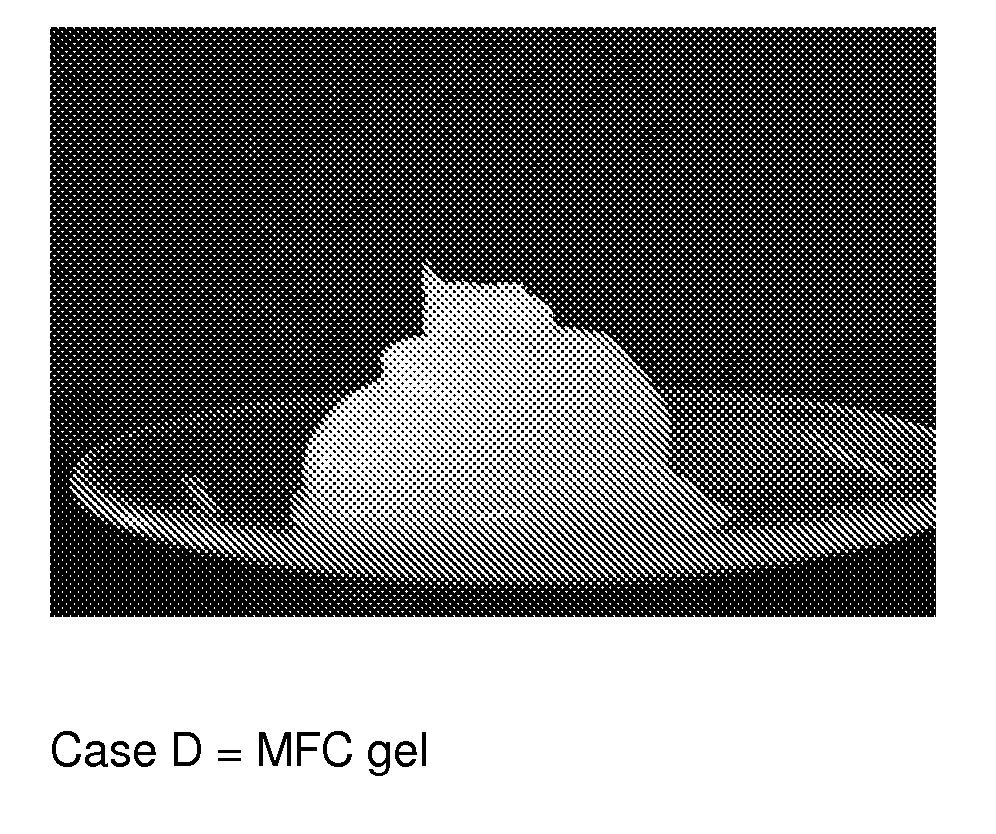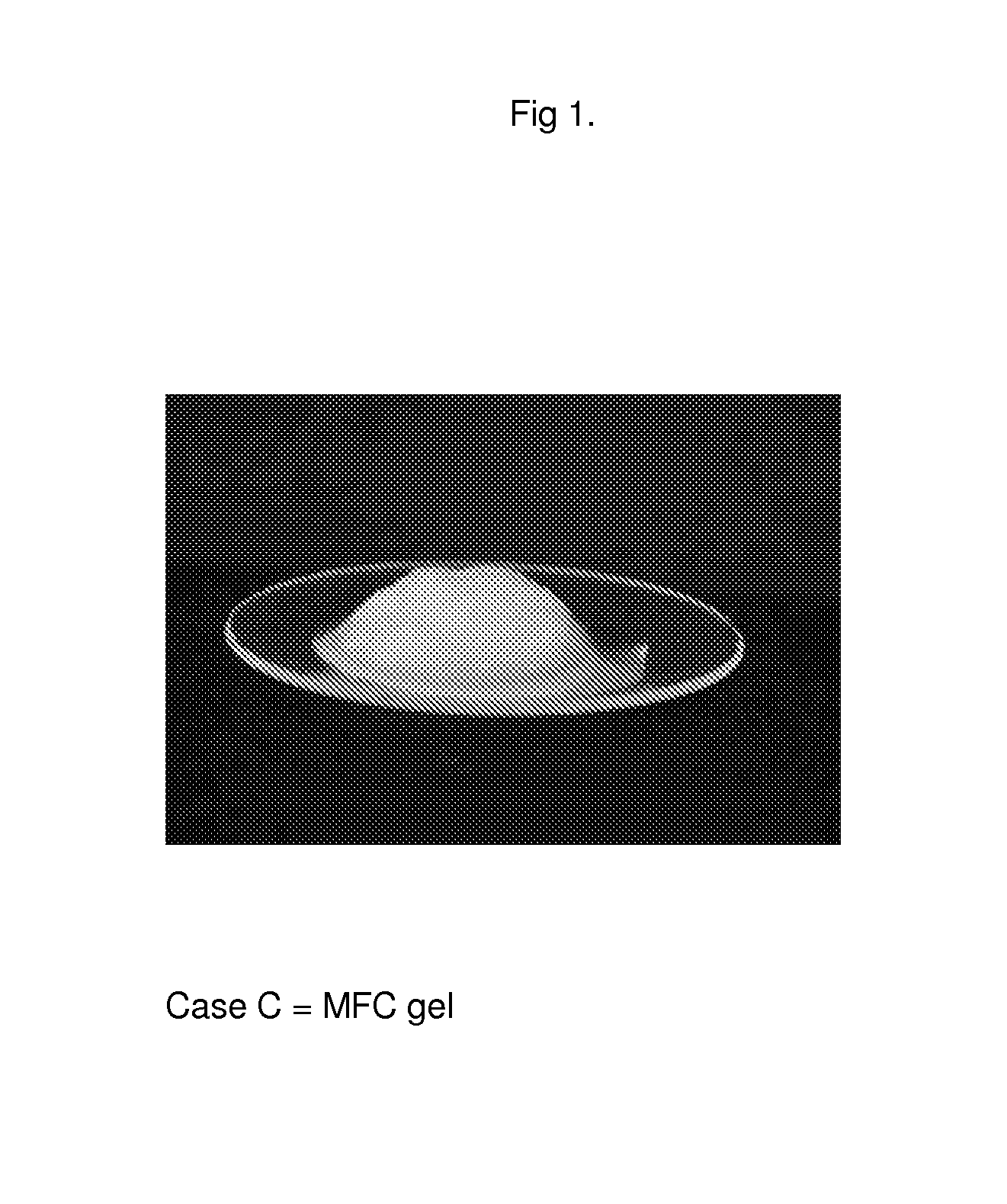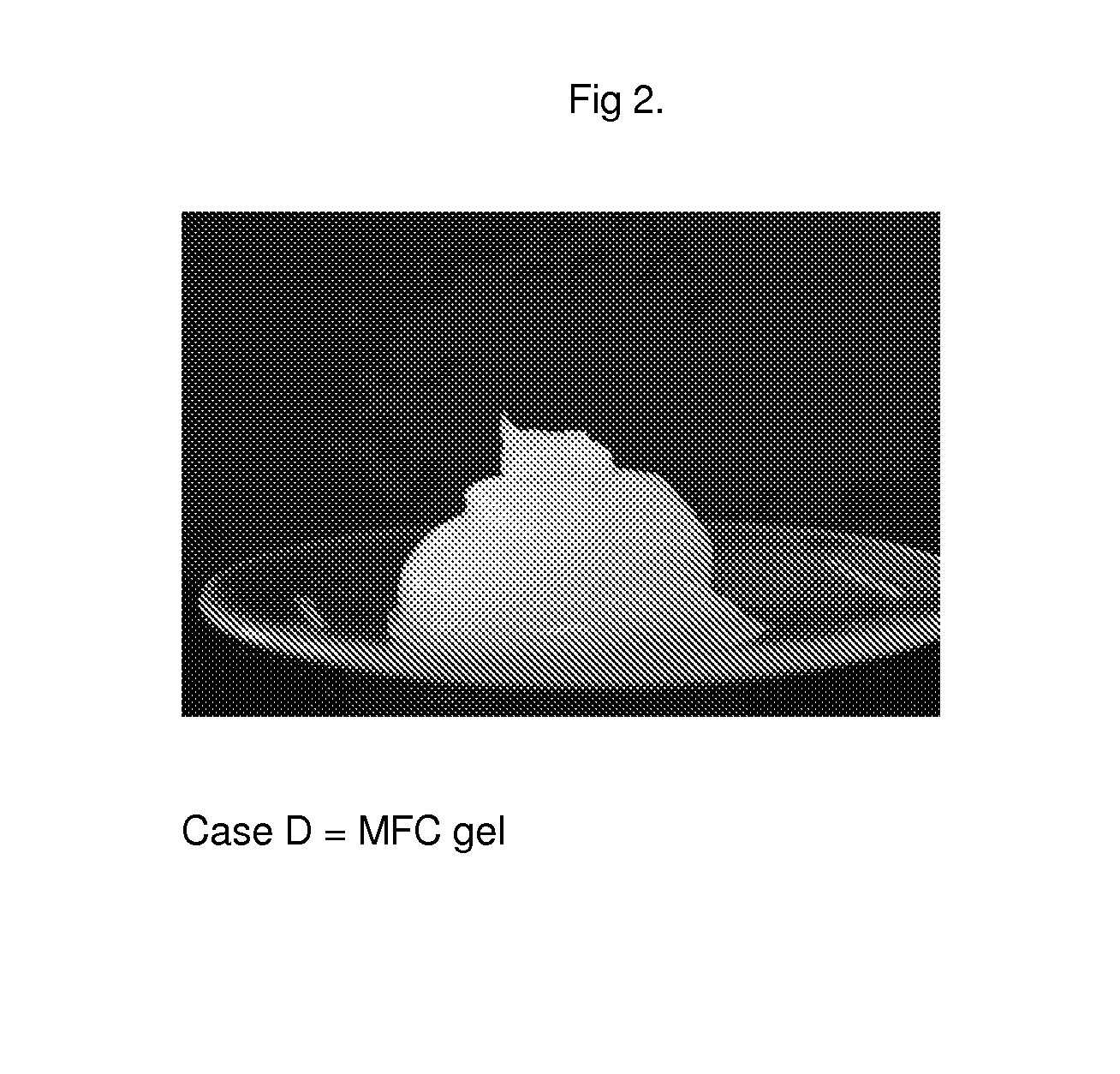Method for providing a nanocellulose involving modifying cellulose fibers
a technology of cellulose fibers and nanocellulose, which is applied in the field of providing nanocellulose involving cellulose fibers, can solve the problems of clogging of the homogenizer and excessive energy consumption during homogenization, and achieve the effects of less energy consumption, less clogging, and less charge density
- Summary
- Abstract
- Description
- Claims
- Application Information
AI Technical Summary
Benefits of technology
Problems solved by technology
Method used
Image
Examples
examples
Cases A-F
Pulp: Commercial Never Dried Bleached Sulphite Pulp (Domsjö ECO Bright, Domsjö Fabriker)
Procedure:
[0037]1. The never dried pulp was first dispersed in deionised water. Two liters of deionised water was added to 30 grams of pulp and was then dispersed with 10000 revolutions in a laboratory disintegrator in accordance to (ISO 5263-1:2004).[0038]2. The pulp was then ion-exchanged into its hydrogen counter-ion form. Firstly, the HCl was added to the pulp to a concentration of 10−2 M (pH is 2). The pH was held at 2 for 30 minutes. Then the pulp was washed with deionised water on a büchner funnel until the conductivity of the filtrate was below 5 μS / cm.[0039]3. The pulp was then ion-exchanged into its sodium counter-ion form. Firstly, the NaHCO3 was added to the pulp to a concentration of 10−3 M and NaOH was then added to reach a pH of 9. The pH was held at 9 for 30 minutes. Then the pulp was washed with deionised water on a büchner funnel until the conductivity of the filtrate w...
case i
Pulp: Commercial Never Dried Bleached Sulphite Pulp (Domsjö ECO Bright, Domsjö Fabriker)
Procedure:
[0053]1. The never dried pulp was first dispersed in deionised water. Two liters of deionised water was added to 30 grams of pulp and was then dispersed with 10000 revolutions in a laboratory disintegrator in accordance to (ISO 5263-1:2004).[0054]2. The pulp was then ion-exchanged into its hydrogen counter-ion form. Firstly, the HCl was added to the pulp to a concentration of 10−2 M (pH is 2). The pH was held at 2 for 30 minutes. Then the pulp was washed with deionised water on a büchner funnel until the conductivity of the filtrate was below 5 μS / cm.[0055]3. The pulp was then ion-exchanged into its sodium counter-ion form. Firstly, the NaHCO3 was added to the pulp to a concentration of 10−3 M and NaOH was then added to reach a pH of 9. The pH was held at 9 for 30 minutes. Then the pulp was washed with deionised water on a büchner funnel until the conductivity of the filtrate was below ...
PUM
| Property | Measurement | Unit |
|---|---|---|
| temperature | aaaaa | aaaaa |
| temperature | aaaaa | aaaaa |
| temperature | aaaaa | aaaaa |
Abstract
Description
Claims
Application Information
 Login to View More
Login to View More - R&D
- Intellectual Property
- Life Sciences
- Materials
- Tech Scout
- Unparalleled Data Quality
- Higher Quality Content
- 60% Fewer Hallucinations
Browse by: Latest US Patents, China's latest patents, Technical Efficacy Thesaurus, Application Domain, Technology Topic, Popular Technical Reports.
© 2025 PatSnap. All rights reserved.Legal|Privacy policy|Modern Slavery Act Transparency Statement|Sitemap|About US| Contact US: help@patsnap.com



